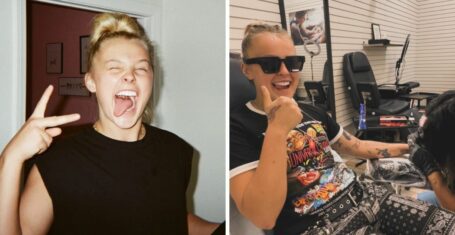
“Art is art. Sculpture is sculpture. Fashion is something else.” Calvin Klein brings some glamour to the Cambridge Union.
He even signed my Calvins.
In an industry full of big names, few are bigger than Calvin Klein. He may be 73 years old but he was still looking as glamorous as ever under the bright stage lighting of the Union Chamber.
His designs are iconic, having been worn by stars and starlets from Kate Moss to Justin Bieber. He’s one of the few major designers to be equally accomplished in lady’s and gentleman’s fashion, with a clutch of awards to his name. And even though he’s now officially left the helm of the company that bears his name, it seems there’s no letting-up.
Within moments of him starting to speak, it becomes clear that he’s as busy as ever. He tells how he’s recently spoken at a string of impressive institutions, including Harvard University (the Cambridge across the pond.) In between speaking engagements, the designer says that he’s working on a book. Klein relates how a friend told him “if you don’t write it, someone else will. And you’ll hate it.”
He still hasn’t fully left the fashion business, though – one of his most recent enterprises involved working on the image and visual presence of a group of schools in a rough neighbourhood of Harlem, including designing their uniforms. “It gave them pride,” he says, riffing about the importance of image and identity to brands and institutions.
Ready for my close-up.
Klein began his career in 1968 when he launched his first company. Yet he says that the genesis of his fashion career came even earlier. “I knew I wanted to be a fashion designer when I was five years old.” His childhood was clearly one in which art and design were big influences; indeed, he says that he agonised between whether he should pursue art or design. But speaking to him later, there’s little ambiguity. “Art is art. Sculpture is sculpture. Fashion is something else; it’s design. It’s creative, but I don’t believe a designer is an artist.”
Perhaps not an artist, then, but Klein has certainly influenced art. It’s not just the timeless designs that he’s worked on, but the branding and image of Calvin Klein clothes. Perhaps the most notorious example would be the 1980s advertising campaign with Brooke Shields, with the 15-yr old actress seductively telling us that “nothing…comes between me and my Calvins.” Iconic, certainly – but what does he think now? “It was just fun,” he says, “staying up drinking vodka with the ad men and planning these things.”
He points out that today those ads wouldn’t have been anywhere near as controversial. But he’s decidedly less indulgent when looking at the sexualisation of the fashion industry today. “We have pushed the envelope too far”, Klein says. He relates an incident where American comedienne Rosie O’Donnell castigated him for approving a campaign involving prepubescent kids in just underwear; Klein had to make the decision to pull the ads. Has he shied away from controversy? Not necessarily, but it seems he’s more cognizant of what will work in today’s market.
As he recounts his early influences, ranging from his high-school art teacher to the Russian emigré nobleman the Baron de Gunzberg, it’s difficult not to be impressed at Klein’s longevity in an industry where trends change every week. What’s the secret to his success? “I wasn’t interested in ladies who lunch,” he says, recounting the absurd practise in the industry of focussing ‘above the table’ – that is, upon the parts of the dress that would be seen when the wearer was sitting at a table. Klein doesn’t see the female body as merely a mannequin; he sees it as a dynamic entity interacting with the dress.
He’s a global brand, but how does he view globalisation? Unexpectedly, Klein sounds pessimistic. “I’m disappointed … now everyone looks the same,” he adds. The Europe of his youth has been replaced with a more homogenous world, and he sees that happening in Asia too. Perhaps surprisingly for an iconic American designer, he notes with a hint of regret that “the Americans are all over the place now in design.” It’s South America that Klein argues might be a bastion of independent style against this homogeneity. “They’re not that interested in the rest of the world. They’re interested in having fun.”
So has the landscape of the fashion world changed? Not really, it seems. “Paris is still No. 1, for designers all over the world – if you really want to be seen, do a show in Paris.” He blames this principally on economics – it’s just not viable for journalists to visit every city and fashion show, so major centres like Paris or Milan inevitably become hubs for fashion. But Klein himself is certainly amenable to global influence. He’s recently visited India, and enthuses about the ambition of their designers.
Cambridge is the home of many aspiring fashionistas.
One of the most unexpected things about Klein is how nice he is. In an industry with an infamously high proportion of self-obsessed divas, Klein is modest and friendly; despite having talked for almost an hour, he’s willing to field questions from the assembled press afterwards, and then take photos with a clutch of admirers who wander into the room just as he’s about to leave. I asked him for a picture and he obliged, directing his perfect pout at the camera. And then he’s out of the chamber, charming and affable, effortlessly elegant in a black-jacket-and-dark-jeans combo.
He may no longer be the head of the company that bears his name, but Calvin Klein is definitely not finished with the world of fashion.
@David_Verghese









































